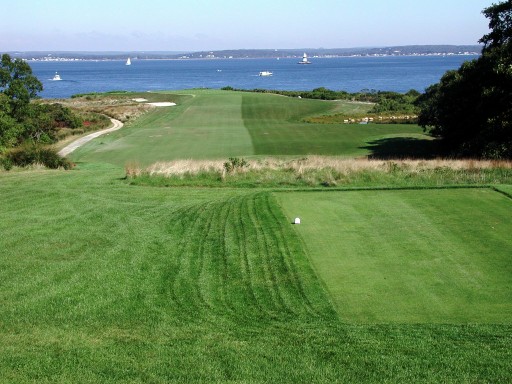Pete Dye and Tom Fazio have designed hundreds of courses since their 51st birthdays. At 87 years old, Pete Dye continues to design courses and tinker with some of his most famous designs. Tom Fazio, having just celebrated his 68th birthday, is one of the few golf architects that designed and opened new courses through the recent lean times and now Tom Fazio II carries on the family tradition that began with George Fazio. Sadly, Seth Raynor died at age 51 from pneumonia, an ailment routinely dispensed with since the advent of antibiotics. He was at the height of his powers and popularity with dozens of courses pending at the time of his premature passing. Ironically, it may have been Raynor’s popularity that precipitated his death as he was crisscrossing America, sailing the Pacific and attending functions in furtherance of his craft. If Raynor had the longevity of Dye or Fazio or Donald Ross, he most certainly would have been the most prolific golf course architect of all time.
Despite shockingly little first person record of Seth Raynor’s life and times, his courses and collaborations present a lasting legacy. The many delightful courses singularly designed by Raynor are highlighted by Camargo, Shoreacres, Fishers Island, Fox Chapel and Yeaman’s Hall. The timeless collaborations with Charles Blair MacDonald include National Golf Links of America, Yale Golf Club, Chicago Golf Club and The Creek Club. The incomplete courses that Seth Raynor would have seen to fruition were largely taken over by Charles Banks and are headed by Sequoya Golf Club and Lookout Mountain, among many others. These courses essentially comprise the biography of Raynor as very little is truly known of the man and the published material on his life virtually covers the same ground. In terms of golf architecture, the courses themselves represent a deep and rich biography.
The far flung geographical locales of Raynor’s courses certainly contributed to his early demise. It is a reasonable deduction that Raynor left his home in Long Island, boarded a train that eventually arrived at the California Coast where he sailed to Hawaii to examine Waialai Country Club and Hawaii Prince Golf Club, then sailed back to the continental coast to take a look at Cypress Point and/or Sequoya and subsequently set off for Florida where the rigors of this odyssey prompted his death. Perhaps Raynor was busily readying for retirement and his creative outburst of the early to mid 1920’s would constitute his life’s work, but this is quite unlikely. The opposite is virtually certain; namely, Raynor would have continued to design great golf courses in the best locations.
Despite the Great Depression and the decline of the golden age of golf architecture that followed shortly after Raynor’s death, it would not have been unimaginable that he would have completed Cypress Point and continued with other lasting designs in the West. Likewise, it is not a stretch to think that Seth Raynor designs would have appeared in the North Carolina Sandhills, at the Broadmoor, Sea Island or Nassau. Similar to Flynn or MacKenzie, Seth Raynor would have found his way to the coast of Holland, the Sandbelt of Australia or the parklands of Japan. In the end, the best way to experience the legacy of Seth Raynor is to get out and play his courses, then contemplate the interesting possibilities if he had enjoyed the long life of Dye, Fazio or Ross.

